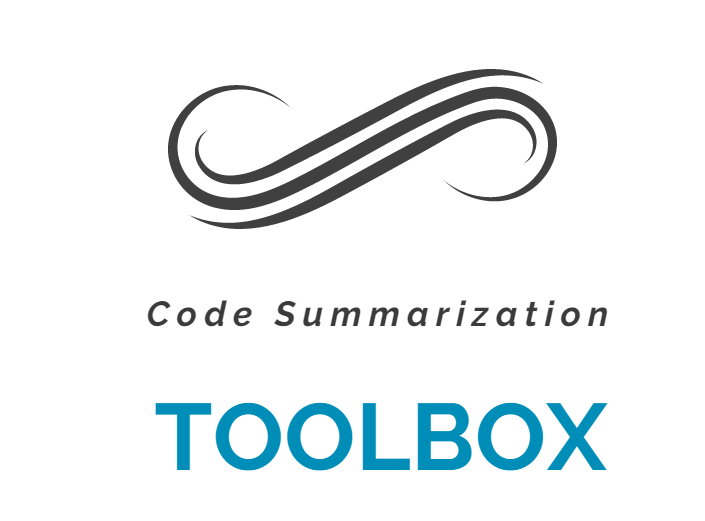This is the replication package for "On the Evaluation of Neural Code Summarization" accepted to ICSE2022.
Note: If the above image can not be rendered correctly, please clear the cache of web browser and refresh the page.
We build a shared code summarization toolbox containing:
- 12 raw and processed datasets,
- 4 code pre-processing operations and 16 combination implementations,
- 6 BLEU variants implementation,
- re-implement code for the paper without code,
- all predicted logs in our paper.
The overview of dataset:
| Name | Training | validation | Test | #Class | #project | Description |
|---|---|---|---|---|---|---|
| TLC | 69,708 | 8,714 | 8,714 | – | 9,732 | Original TL-CodeSum |
| TLC_Dedup | 69,708 | 8,714 | 6,449 | – | – | Deduplicated TL-CodeSum |
| CSN | 454,044 | 15,299 | 26,897 | 136,495 | 25,596 | Filtered CodeSearchNet |
| CSN_Project_Medium | 454,044 | 15,299 | 26,897 | 136,495 | 25,596 | split by project |
| CSN_Class_Medium | 448,780 | 19,716 | 28,192 | 136,495 | 25,596 | split by class |
| CSN_Method_Medium | 447,019 | 19,867 | 29,802 | 136,495 | 25,596 | split by method |
| CSN_Method_Small | 69,708 | 19,867 | 29,802 | – | – | Subset of CSN_Method_Medium |
| FCM | 1,908,694 | 104,948 | 104,777 | – | 28,790 | Filtered Funcom |
| FCM_Project_Large | 1,908,694 | 104,948 | 104,777 | – | 28,790 | Split by project |
| FCM_Method_Large | 1,908,694 | 104,948 | 104,777 | – | 28,790 | Split by method |
| FCM_Method_Medium | 454,044 | 104,948 | 104,777 | – | – | Subset of FCM_Method_Large |
| FCM_Method_Small | 69,708 | 104,948 | 104,777 | – | – | Subset of FCM_Method_Large |
These raw or processed datasets can be downloaded from here
USAGE:
cd codepreprocessing/
python preprocess.py -h [-OPTIONS...]
OPTIONS:
-h, --help show this help message and exit
-data_filename DATA_FILENAME
The path of raw dataset
-java_files_dir JAVA_FILES_DIR
The directory to save extracted Java file
-output_dir OUTPUT_DIR
The directory to save processed files
-djl Parse source code using javalang
-dfp Filter punctuation in code tokens
-dsi Split identifiers according to camelCase and
snake_case
-dlc Lowercase code tokens
-dr Replace string and number witt generic symbols
<STRING> and <NUM> in code tokens
-cfp Filter punctuation in summaries
-csi Split summary token according to camelCase and
snake_case
-clc Lowercase summary tokens
-sbt_type {1,2} 1:SBT_AO; 2:SBT
DEFAULTS:
- If not specified, the default [`data_filename'] is [`original/data.pkl`]
- If not specified, the default [`java_files_dir'] is [`./java_files`]
- If not specified, the default [`output_dir'] is [`./processed`]
- If not specified, the default [-djl], [-dfp], [-dsi], [-dlc], [-dr], [-cfp], [-csi] and [-clc] are False
- If not specified, the default [`sbt_type'] is [`2`]
EXAMPLES:
python preprocess.py -djl
This example will use javalang to tokenize the all Java methods.
python preprocess.py -djl -dsi -dlc
This example will use javalang to tokenize all Java methods.
Then split identifiers according to camelCase and snake_case and lowercase them.
NOTES:
- data.pkl saves a dict.
The keys are ['train', 'test', 'val']
The values are {fid:item}. item is {"code":"xxx", "summary":"xxx"}
- The tools are based on python3
- The packages "spiral" and "javalang" are needed. You can install them by:
pip install git+https://github.com/casics/spiral.git
pip install javalang==0.12.0
| Models | Source |
|---|---|
| Codenn | https://github.com/sriniiyer/codenn |
| Deepcom | ./Deepcom_Reimplement |
| Astattgru | https://github.com/mcmillco/funcom |
| Rencos | https://github.com/zhangj111/rencos |
| NCS | https://github.com/wasiahmad/NeuralCodeSum |
USAGE:
cd metric
python evaluate.py
OPTIONS:
--refs_filename The path of the reference file
--preds_filename The path of the predicted file
DEFAULTS:
- If not specified, the default [`refs_filename'] is [`test/test.gold`]
- If not specified, the default [`preds_filename'] is [`test/test.pred`]
EXAMPLES:
python evaluate.py
This example will calculate the six bleu variants scores between [`test/test.gold`] and [`test/test.pred`]
output:
+-----------+---------+---------+---------+----------+---------+
| BLEU-DCOM | BLEU-FC | BLEU-DC | BLEU-CN | BLEU-NCS | BLEU-RC |
+-----------+---------+---------+---------+----------+---------+
| 18.94 | 18.3675 | 21.8686 | 27.9888 | 28.4195 | 18.9404 |
+-----------+---------+---------+---------+----------+---------+
NOTES:
- The tools are based on python3
- The packages "nltk"(3.6.1 or newer, "numpy" and "prettytable" are needed. You can install them by:
pip install nltk==3.6.1 numpy prettytable==2.1.0
All Predicted Logs is saved in folder RQ.
Folder Structure (Complete structure can be found here)
.
├── RQ1
│ ├── calculate_correlation.py
│ ├── cal_human_agreement.py
│ ├── correlatio_coefficient_log
│ ├── human_aggrement_log
│ ├── human_evaluation.xlsx
│ ├── README.md
│ ├── RQ1.ipynb
│ ├── score.xlsx
│ ├── TLC
│ │ ├── astattgru
│ │ │ └── test.pred
│ │ ├── codenn
│ │ │ └── test.pred
│ │ ├── deepcom
│ │ │ └── test.pred
│ │ ├── ncs
│ │ │ └── test.pred
│ │ ├── rencos
│ │ │ └── test.pred
│ │ └── test.gold
│ └── TLC_dedup
│ ├── astattgru
│ │ └── test.pred
│ ├── codenn
│ │ └── test.pred
│ ├── deepcom
│ │ └── test.pred
│ ├── ncs
│ │ └── test.pred
│ ├── rencos
│ │ └── test.pred
│ └── test.gold
.....
How do different evaluation metrics affect the performance of code summarization and which is correlate with the human perception the most?
All the experiment results including the human evaluation, the significant testing can be found here.
How do different pre-processing operations affect the performance of code summarization?
All the experiment results including the significant testing can be found here.
How do different datasets affect the performance?
All the experiment results including the significant testing can be found here.
If you use above data or source code , please consider citing our paper:
@inproceedings{shi2022evaluation,
title={On the evaluation of neural code summarization},
author={Shi, Ensheng and Wang, Yanlin and Du, Lun and Chen, Junjie and Han, Shi and Zhang, Hongyu and Zhang, Dongmei and Sun, Hongbin},
booktitle={Proceedings of the 44th International Conference on Software Engineering},
pages={1597--1608},
year={2022}
}
Thanks!
